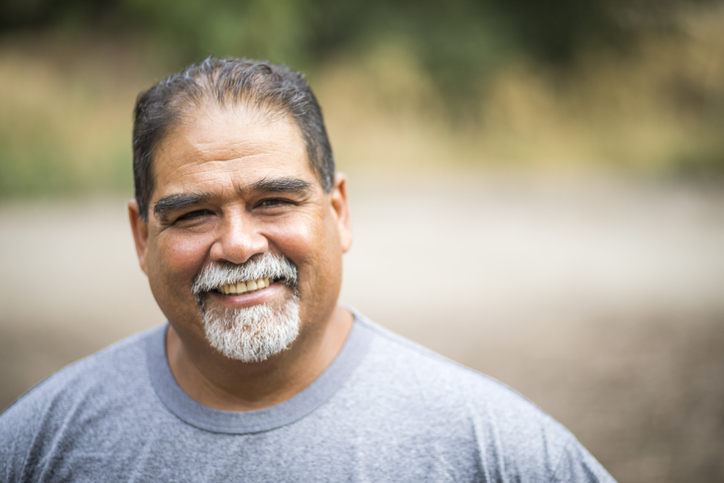How to Build Wealth at Every Age: 6 Tips From Your Waco Bank
Building wealth is a lifelong process that sets you up for a happy and peaceful retirement. It doesn’t require a degree in finance; it only requires a bit of effort and smart planning.
According to the New York Times, most millionaires don’t become millionaires until they’re in their fifties (proving that slow and steady wins the race!) At different stages of your life, there are steps you can take to improve your financial future and increase your wealth over time.
TFNB Your Bank for Life has helped thousands of Central Texans build their nest egg. Here are some no-fail tips on building wealth at any age.
20s: Pay Yourself First and Start Investing
Pay Yourself First
Paying yourself first means allocating a recurring amount of your paycheck toward your savings. This strategy promotes consistent savings and goal-setting. How much money do you want to have saved in a year? Five years? 10 years? These questions can help you determine the right amount to be saving each time your paycheck comes in.
Paying yourself is the most important habit you can develop. It allows you to see the long-term benefits of your money and helps you avoid a paycheck-to-paycheck lifestyle.
When you’re just starting out, consider a 50/30/20 budget: allocate 50% of your monthly income toward essential expenses and 30% toward wants, making sure you contribute at least 20% toward saving (or paying yourself). Where should you save that 20%? That takes us to our next point.

Start Investing
Your twenties are the time to contribute to an investment portfolio that will continue to earn money as you go through adulthood. We know, we know: you’re just starting your professional life! But trust us — it’s never too early to start thinking about retirement.
Consider saving to a 401(k) account or a Roth IRA. These are both types of retirement accounts that differ in the way they are taxed. If your employer offers any options for matching 401(k) contributions, be sure to save enough to maximize those contributions (it’s free money for your future). For an IRA in Waco, (or an “Individual Retirement Account”) visit TFNB. Our team can walk you through a savings strategy that works with your income and lifestyle.
As well as a retirement account, think about saving money in a somewhat aggressive mutual fund or index fund. These funds include a multitude of different stocks and are managed by seasoned investors.
While the stocks, bonds, and other assets in these funds carry a bit more risk, they also have the potential to grow your investment more. As a young professional, higher risk for higher reward could be beneficial for your long-term wealth.
Want more tips?
Take our "Investing in Your Future" course from the Financial EDGE Academy. It's a free and helpful guide you can complete in just an hour. Get Started30s: Utilize Multiple Sources of Income and Remove Debt From Your Life
Multiple Sources of Income
Welcome to your 30s! You may be thinking about buying a home, having kids, and saving for college, but there’s still opportunities to grow your wealth.
By now you have a bit more career experience. Your job is likely your main source of income. It should provide the bulk of the money you’ll use to generate wealth over time. However, you can do yourself a great service by generating multiple sources of income, creating more income while lowering your risk. With multiple sources of income, if you lose your job you still have other projects to fall back on while you search for a new job.
In his study of how wealthy individuals manage their finances, Tom Corley found that most self-made millionaires produced their income from multiple sources. Corley notes that:
- 65% had three streams of income
- 45% had four streams of income
- 29% had five or more streams of income
If your goal is to generate wealth, looking at the way wealthy people have managed their income is a good place to start. Corley’s data shows that multiple streams of income are beneficial, if not essential, to accumulating wealth over time.
But how can I gain income outside of my current job?
If you have a hobby or talent you’re passionate about, see if you can profit off of it! A side business that allows you to pursue your passions while making a little extra cash is a great use of your time and resources.
If you are crafty or artistic, e-commerce giants like Etsy and Amazon make it simple to sell t-shirts, greeting cards, jewelry, and any type of product to people around the country. Or, use your unique skill to consult with others who could use your talent.
Real estate is another popular field for people to diversify their income. Consider buying a rental property or operating an Airbnb/Vrbo listing. In our current “gig” economy, the options are endless for starting that next side hustle.

Remove Debt From Your Life
You likely have debt in some form or fashion. Student loans, credit cards, medical bills, and even mortgages can hold you back from building wealth.
(If you’ve accumulated debt over your lifetime, know that you’re not alone. According to a report from CNBC, the average American has over $90,000 in debt, with Gen X leading the way with an average of $135,841 in debt.)
Now is the time to put a plan in place to remove debt so you can pay yourself more.
Budgeting is the first step. Be smart about what you buy. Remember the 50/30/20 budgeting system? While you’re in the debt-removal stage, you may want to allocate some money from the wants category toward paying off debts as well. You can’t begin to generate real wealth until you eliminate as much debt as possible.
But which debts should I pay off first? The famous financial advisor Dave Ramsey recommends a method he calls the “Debt Snowball.” With this method, Ramsey suggests making a list of all your debts from the smallest to the largest. Then, focus your efforts on paying off the smallest debt quickly while making the minimum payment on the rest of your debts. With time, you’ll knock off the debts one by one, freeing up more capital to pay off your other debts as you eliminate each debt one by one.Making good purchasing decisions is key to paying off debt. Even if you spent more money than you had available earlier in your life, now is the time to change those practices. Spend money wisely on things that you need and save the “wants” for special occasions.
40s & 50s: Revisit Your Portfolio Yearly and Consider Refinancing Your Mortgage
Revisit Your Portfolio Yearly
It’s easy to set up your retirement investment portfolio and then go into autopilot. And to a certain extent that’s a good thing — your money should be working for you, not requiring your everyday attention. But, it’s important to revisit your portfolio each year to analyze what is working and what is not.
To manage risk, you should come up with a balance of stocks to bonds that you are comfortable with.
Stocks offer higher risk with the opportunity for more reward, while bonds are a less volatile option that is generally seen as more safe. Say you’re comfortable with a ratio of 80% stocks to 20% bonds in your investments. After a year, your stocks have likely gained more value than your bonds. Your new ratio may have changed to 82% stocks to 18% bonds, meaning you are now taking on more risk than you had planned.
Rebalancing your portfolio can help you make sure you are investing with a risk amount you are comfortable with. Revisiting your portfolio also allows you to analyze which stocks or investments you are not satisfied with. You can sell those and invest in something else, save the money, or even use it to pay off debt.

Consider Refinancing Your Mortgage
If you haven’t evaluated your mortgage in the past few years, now is a great time to refinance. When you refinance a mortgage, you’re looking for a lower interest rate. If your credit has improved since you last refinanced, this can be great for your long-term wealth management. Interest rates are at historic lows.
Most experts agree: refinancing is a good idea if you can save at least 0.5 to .075% by doing so.
But before you refinance, compare any future savings with the current costs to refinance. Closing costs are usually 2% to 5% of the loan’s principal amount. If you borrow $200,000 and closing costs are 2%, then you would owe $4,000 at closing.
While that’s a lot of money, the long-term savings from refinancing may be well worth it. To figure out how long it will take to break even from your refinancing costs, divide your closing costs by the amount you will save each month. This can help you better understand the true value of refinancing.
If you’re considering refinancing your mortgage, talk to our team at TFNB. Our mortgage lenders can help you understand if refinancing is a good move for you and help get you the best rate.
Responsible Wealth Management with TFNB, Your Waco Bank for Life
TFNB is here to help you manage your wealth at any age — that’s why we’re Your Bank For Life. Whether you’re graduating from college or are looking forward to retirement in just a few years, come talk to us. As a local bank, we want to get to know you and your goals — not just talk dollars and cents.
Visit one of our locations today to meet with a friendly TFNB banker.
How can I be "retirement ready?"
Take our "Preparing for Retirement" course from the Financial EDGE Academy! Free and fast, it answers questions like "What's the difference between pre-tax and after-tax contributions?" or "When should I collect social security?" Get StartedIf you have any questions or would like to know more about our banking solutions, contact us at 1-800-264-4274
Learn MoreShare On




